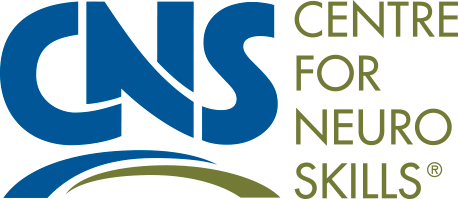Ten Principles of Neuroplasticity
Kleim and Jones* outlined ten principles of neuroplasticity that can be helpful to keep in mind in the treatment environment:
- "Use It or Lose It" "Neural circuits not actively engaged in task performance for an extended period of time begin to degrade." An example of this might be seen in the treatment of a patient who requires g-tube feeding due to an inability to be fed orally. Over time, the circuits responsible for the swallowing mechanism may actually begin to degrade due to lack of use. Subsequently, when that patient is able to begin to swallow again, they may require additional time and trials to re-establish this process as these circuits may be a bit "rusty."
- "Use It and Improve It" "Training that drives a specific brain function can lead to enhancement of that function." An example of this can be highlighted from the previous discussion of a stroke patient who may have lost use of a particular side of their body and may be neglecting that side or not using it because it is simply too difficult. In the treatment setting, a technique known as constraint-induced movement therapy (CIMT) can be used to restrain the arm on the non-affected side so that the patient is compelled to use their affected limb as much as possible and improve its function.
- "Specificity" "The nature of the training experience dictates the nature of the plasticity." From a treatment standpoint, specificity highlights the importance of tailoring an activity or exercise to produce a result in specific circuitry. For example, as discussed earlier, physical exercise can be utilized to promote vascular growth, if that is your aim. By the same token, exercises and modalities geared toward enhancing swallowing might also be related to the circuitry involved in producing speech, but may not necessarily generalize to actually producing speech.
- "Repetition Matters" "Induction of plasticity requires sufficient repetition." One of the challenges for therapists in the rehabilitation environment can often revolve around being able to quantify how much time or how many sessions of specific therapy a patient needs to recover certain skills. Stakeholders, especially insurance representatives and the patients themselves, want to know, "How long is it going to take to get better?" The truth is, we don't know these actual numbers, but we do know from research and study, that thousands and tens of thousands of repetitions of certain activities are needed to generate these changes. Because of this, it may take utilizing techniques such as combining therapies to provide patients the opportunities for sufficient repetition of skills. For example, to get those "thousands of steps" that a patient may need to learn to walk again, a physical therapist may have the patient walking in and between their other therapies during the day or making sure they are getting up and out of their wheelchair when they are not in their PT session. By the same token, a physical therapist could help out the speech therapist by having the patient work on memory or path-finding activities during their PT session.
- "Intensity Matters" "Induction of plasticity requires sufficient intensity." The question of proper therapy intensity follows this concept of repetition as well: " What is the proper dosage of therapy necessary? "How many sessions?" How long should these sessions be?' Research has also shown us that the more intensive the therapy program, the more likely a person is to achieve results and the more likely these changes are to be maintained over time.
- "Time Matters" "Different forms of plasticity occur at different times during recovery." This principle is based on the idea that after an injury, the brain really wants to recover, so it makes sense that the earlier you provide the opportunity for recovery through these neuroplastic changes, the better. This "early vs. late" approach is especially important to support the beginning treatment before maladaptive behaviors have a chance to spring up.
- "Salience Matters" "The training experience must be sufficiently salient to induce plasticity." What the person takes away from the training experience and what it means to them can affect their recovery. It is important for the therapist to know what is important to the patient, as emotions can modulate the strength of training or, for example, something like memory consolidation. If the therapist can make the training or information salient and important to the patient, they can more easily remember skills or pieces of information that are important to them, as their brains are often already overwhelmed with input.
- "Age Matters" "Training-induce plasticity occurs more readily in younger brains." As discussed earlier, younger brains are already more plastic and adaptable to change than older brains, which is important to keep in mind when working with older versus younger patients.
- "Transference or Generalization" "Plasticity in response to one training experience can enhance acquisition of similar behaviors." In the training process, the therapist needs to have an eye toward how a particular skill or activity can be generalized or transferred to real world activities, such as increased independence in the home environment.
- "Interference" "Plasticity in response to one training experience can impede acquisition of similar behaviors." When patients are actually able to come in for neurological treatment and that treatment is delayed, they often come in with compensatory behaviors for skill deficits, having already learned a different way of compensating, but which may not be the best way. With this, some of the challenge to learning the best way to regain a skill may involve "unlearning" some of these previously acquired behaviors.
< Appreciating Plasticity Last | Next Learning, Injury and Recovery >

